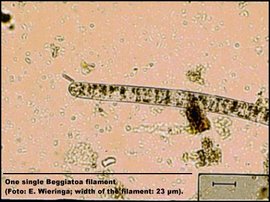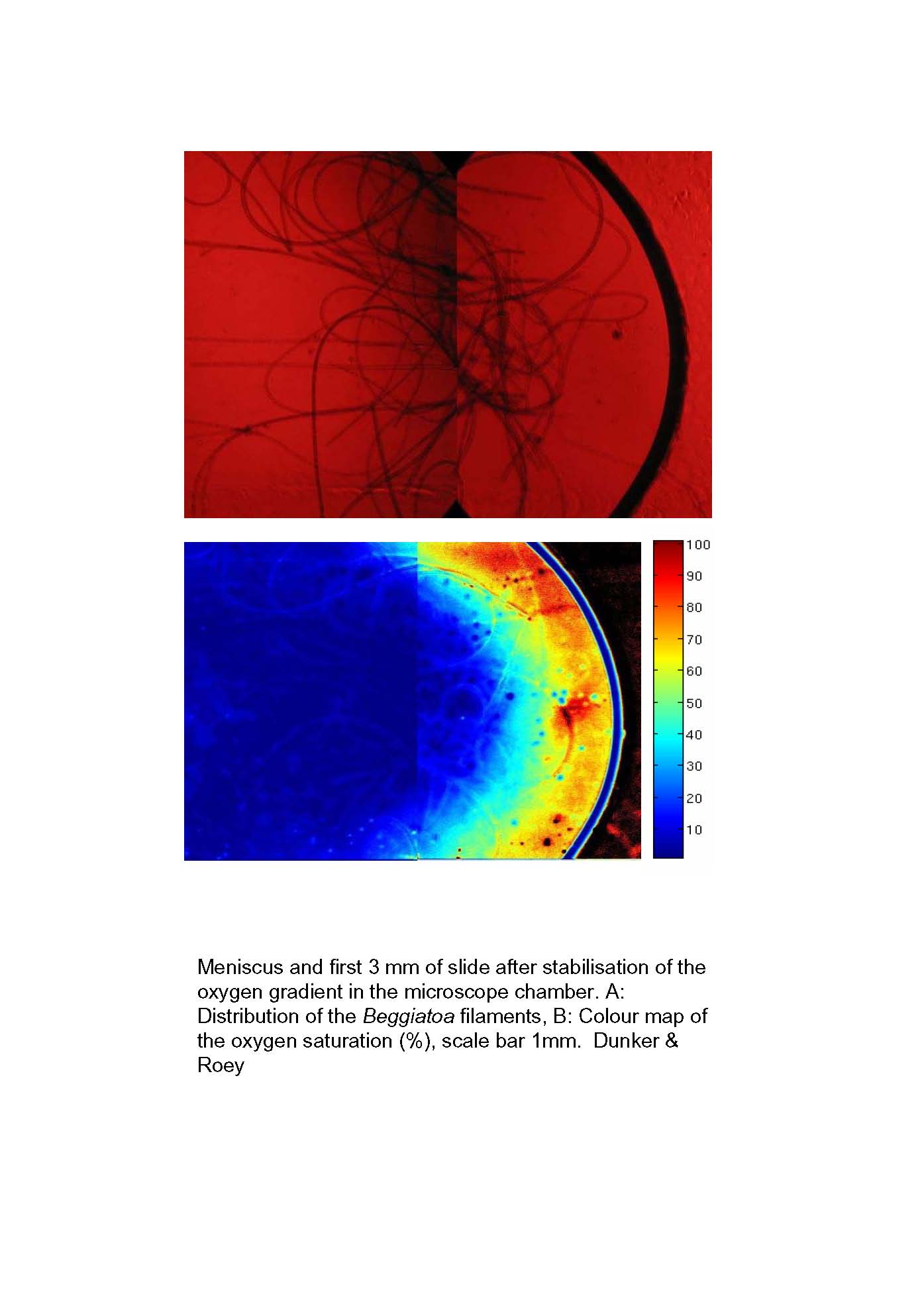Page path:
- Departments
- Department of Biogeochemistry
- Chemotaxis in Sulfur Bacteria
Chemotaxis in Sulfur Bacteria
Enormous amounts of hydrogen sulfide are produced through sulfate reduction in marine sediments, and the pathways and microbiology of sulfide oxidation are therefore very important. Our understanding of this process has changed greatly in recent years, from the classical description of sulfide oxidation as a simple process carried out by aerobic sulfur bacteria to a complex interaction of chemical and microbiological steps.
These include partial oxidation by metals, disproportionation, and transient precipitation of metal sulfides, transport by bioturbation, and ultimately oxidation with O2. Most recently, the potential role of sulfide oxidation by nitrate-accumulating sulfur bacteria has been recognized.
Such bacteria appear to be widespread in coastal and shelf sediments with high organic deposition where they are responsible for the direct reduction of nitrate to ammonium. The organisms are highly interesting due to their unique cell structure, physiology and behavior.
For instance, marine Beggiatoa spp. are 1-200 µm thick filamentous sulfur bacteria that often occur in environments with opposing oxygen and sulfide gradients of a few cm. The phobic response of Beggiatoa towards both oxygen and sulfide has often been observed, but the chemotactic mechanism remains unclear. Employing a simple microscope chamber filled with Beggiatoa filaments on a microscope slide covered with an oxygen sensitive fluorescent coating, we observe that permanently gliding Beggiatoa filaments still manage, by a combination of partial reversals and loop formation, to avoid areas with elevated oxygen concentration. Although these well-tuned movements require some kind of signal transduction among the filament cells, the experimental results suggest that the signal transduction is not chemical.
These include partial oxidation by metals, disproportionation, and transient precipitation of metal sulfides, transport by bioturbation, and ultimately oxidation with O2. Most recently, the potential role of sulfide oxidation by nitrate-accumulating sulfur bacteria has been recognized.
Such bacteria appear to be widespread in coastal and shelf sediments with high organic deposition where they are responsible for the direct reduction of nitrate to ammonium. The organisms are highly interesting due to their unique cell structure, physiology and behavior.
For instance, marine Beggiatoa spp. are 1-200 µm thick filamentous sulfur bacteria that often occur in environments with opposing oxygen and sulfide gradients of a few cm. The phobic response of Beggiatoa towards both oxygen and sulfide has often been observed, but the chemotactic mechanism remains unclear. Employing a simple microscope chamber filled with Beggiatoa filaments on a microscope slide covered with an oxygen sensitive fluorescent coating, we observe that permanently gliding Beggiatoa filaments still manage, by a combination of partial reversals and loop formation, to avoid areas with elevated oxygen concentration. Although these well-tuned movements require some kind of signal transduction among the filament cells, the experimental results suggest that the signal transduction is not chemical.

